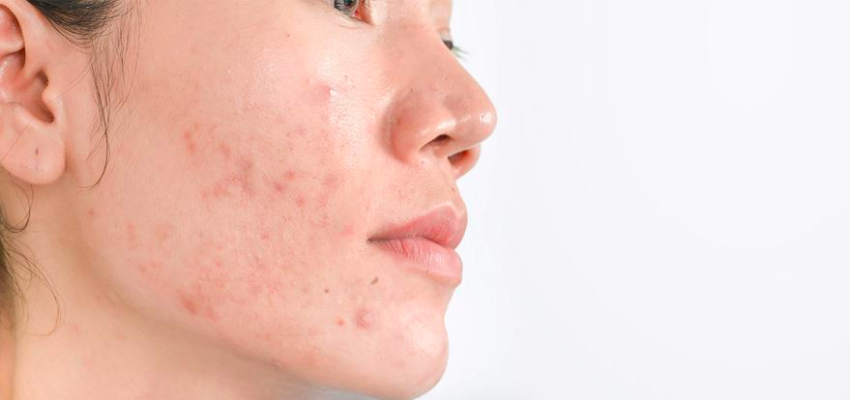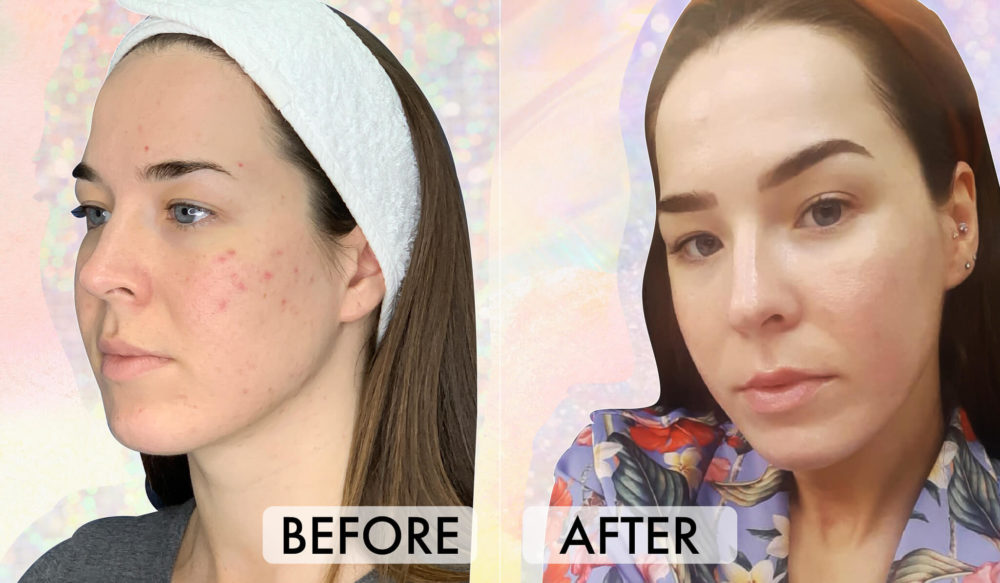The Expert's Guide To Understanding Hyperpigmentation
 Source: Shutterstock
Source: Shutterstock
Hyperpigmentation is a skincare concern that affects millions of people, which means we’re asked for advice on how to treat hyperpigmentation all the time. And since you all kept asking, we wanted to give you ALL the answers directly from the experts who treat hyperpigmentation on a daily basis. We got in contact with two of the world’s top dermatologists: Dr. Harold Lancer, Founder of Lancer Skincare, whose celeb clients include Kim Kardashian, Beyoncé, and Victoria Beckham, and Dr. Doris Day, Author of Beyond Beautiful, dermatologist, award-winning medical researcher, and teacher. They both agreed that hyperpigmentation is the number one concern in their patients, which meant they had a lot to say. Here’re their tips for treating and preventing hyperpigmentation:
What’s hyperpigmentation?
Dr. Lancer explains that “Hyperpigmentation is an inconsistency of color. There are different forms of hyperpigmentation: sun spots, melasma, freckles, etc. Scars from acne or even injury (burns, cuts, abrasions) can cause hyperpigmentation as well.” It’s basically, any uneven skin tone on your body but is most common in areas of your skin that are exposed to damaging external factors, like your face, neck, and decolletage. That means melasma, dark spots, freckles, are all a type of hyperpigmentation.
 Source: American Academy of Dermatology
Source: American Academy of Dermatology
What causes hyperpigmentation?
“Pollution, sun damage, ancestry, injury, hormones, blue light, and heat – are all contributing factors to hyperpigmentation,” Dr. Lancer says. He broke it down a little further:
- Sun Damage: UVA and UVB rays trigger an overproduction of melanin (what gives our skin color). More specifically UVB rays trigger immediate pigmentation (sunburn) while UVA triggers delayed pigmentary changes (around two to five days).
- Pollution: Particulate matter and chemical pollutants, both acid or alkaline, irritate the skin. This irritation leads to melanocyte (melanin forming cell) overactivity.
- Ancestry: Hyperpigmentation can be caused by a genetic predisposition to it.
- Injury: The most common example of an injury that causes hyperpigmentation is picking at a pimple, the pimple resolves and leaves a reddish-brown spot.
- Hormones: Estrogen stimulates melanocyte production of pigment. This is why people who want to correct skin color shouldn’t be taking hormone supplements like birth control. See other ways contraception can affect your skin here.
- Blue light (from computer lights/tv screens): Blue light can trigger hyperpigmentation which is why we recommend putting a filter on all of your devices in your ‘settings’ controls.
- Heat: Sweat and heat can trigger pigmentation. Even if you’re sitting in the shade, if you’re exposed to heat and sweating, it can cause hyperpigmentation.
Types of Hyperpigmentation:
Post-Inflammatory Hyperpigmentation
 Source: Eucerin
Source: Eucerin
Dr. Day told us, “Post-inflammatory hyperpigmentation is the most common type of darkening of the skin and can happen after any insult or trauma to the skin such as rubbing, burns, acne, eczema, rashes or any irritation to the skin. On the face, we may see it as the dark spots that remain after acne has resolved. Some consider it to be scarring, but a change in color of the skin is not a true scar unless there’s no change in texture along with it.” Dr. Day explains that it can also occur on your body “After bug bites, body acne, eczema or anything that irritates the skin. Even friction from shoes or tight clothing can leave marks on the feet, or anywhere straps rub against the skin.”
The best course of treatment: “The most important way to approach hyperpigmentation is to find and treat the underlying cause. It’s also important to be gentle to avoid further inflammation and the hyperpigmentation that goes with it. Over-the-counter options include ingredients such as niacinamide, retinol, vitamin C, licorice extract, tea extracts, sepi-white. Careful use of glycolic acids and salicylic acid to help with skin cell turnover can also be useful, but they can also be irritating, so it’s important to pay attention to your skin and go slow if needed,” Dr. Day suggests.
Posts You'll Love:
Melasma
Another very common form of hyperpigmentation is melasma. Dr. Day told us that “Melasma usually occurs on the face and is triggered by a combination of genetic factors, sun exposure, and hormones. It commonly appears as symmetric, patchy areas of darker skin on the forehead, cheeks and upper lip that typically appear or become darker right after sun exposure. The sun stimulates pigment production to go into overdrive, which leads to the hyperpigmentation.”
The best course of treatment: Dr. Day states that “The many causes of melasma makes it particularly difficult to treat. The darkened areas often persist after childbirth or the discontinuation of hormone therapy. Topical skin lighteners such as hydroquinone, tretinoin, and tranexamic acid can be very effective in treating it. In most cases, chronic intermittent treatment is often necessary to maintain the results.” If your skin is prone to melasma, we recommend consulting with your dermatologist as often the best course of treatment requires a prescription, for example, tranexamic acid, found in Lytera 2.0, $155.
Freckles and Sun Spots
Dr. Day explains that freckles and sunspots are caused by “Sun exposure and can happen in any skin type. Freckles are often seen on the cheeks, chest, and back and can happen after a sunburn, usually in childhood, which is indicative of sun damage. They have irregular borders, and they can lighten and darken depending on the amount of sun exposure you get.” While we find freckles super cute, and many of us at HB HQ embrace ours – our tip is to go over freckles with a damp beauty blender after foundation to pick up excess product and help them peek through – we often get questions on fading freckles, and there are some treatments you could consider, if you wished to do so.
The best course of treatment: Fraxel laser, chemical peels carried out by your dermatologist, and over-the-counter ingredients such as retinol, vitamin C, and niacinamide.
Moles or Birthmarks
“These are common and can happen anywhere on your body from your scalp to between your toes. They are not the same as hyperpigmentation and should be shown to your dermatologist right away if they are new or changing because these do have some risk of being or becoming skin cancer,” Dr. Day says.
Posts You'll Love:
Treating Hyperpigmentation:
At home
Regarding ingredients, Dr. Lancer says, “Hydroquinone is by far the most effective. There are other ingredients that are somewhat effective lighteners/brightening like Kojic Acid, Azelaic Acid, Licorice Extract, Tretinoin helps and Vitamin C, so try to look out for these ingredients in your skincare products (we’ve listed our faves below). The new Dr. Lancer Corrective Lightening Treatment, which launches in January, contains 2% Hydroquinone (the maximum % without a prescription) and skin brightening peptides to fade the appearance of pigmentation.”
Dr. Day recommends “Over-the-counter options include ingredients such as niacinamide, retinol, vitamin C, licorice extract, tea extracts, sepi-white.” She also adds that “Careful use of glycolic acids and salicylic acid that help with skin cell turnover can also be useful, but they can also be irritating, so it’s important to pay attention to your skin and go slow if needed.” However, she insists “The most important message is to avoid unprotected exposure to UV radiation as much as possible, minimize sun exposure in the middle hours of the day when the sun is at its peak, wear a hat, use an SPF 30, and be sure to re-apply it every few hours, and never, ever, go to a tanning salon.”
Our fave products

Source: La Roche-Posay, Ren Skincare, Drunk Elephant
- Ren Skincare Ready Steady Glow Daily AHA Tonic, $32: The lactic acid and azelaic acid precursors, which are typically available only by prescription, make this tonic ideal for hyperpigmentation.
- Kiehl’s Nightly Refining Micro-Peel Concentrate, $60: This nightly peel supports cell turnover, leaving a new layer of skin in its place.
- Drunk Elephant’s C-Firma Day Serum, $80: This serum is a cult classic for a reason: it contains antioxidant-rich, brightening agent vitamin C, that’ll help lighten any dark spots and correct uneven tone.
- La Roche-Posay Ultra-Light Anthelios Face Sunscreen SPF 60, $30: The most important thing to do each day when it comes to treating and preventing hyperpigmentation is to apply sunscreen – even if it’s cloudy!
- Dennis Gross Alpha Beta Extra Strength Daily Peel, $88: This potent peel contains both glycolic acid and salicylic acid, which will help exfoliate the skin, and encourage skin cell renewal.
With your dermatologist
Gentle Waves device: “The Gentle Waves device has been very helpful as an adjunct to melasma treatments and has made the treatments work more quickly, helped the redness improve faster, and generally improved the skin as a whole. It is highly effective and safe for all skin types,” recommends Dr. Day.
Chemical peels: “It can also be helpful to have glycolic or salicylic acid peels done by your dermatologist to help speed the process. It’s very important to note that all these treatments become useless if you do not maintain a rigorous sun protection regimen,” Dr. Day says.
Laser: Dr. Lancer recommends the Halo Laser as “It’s a hybrid laser that has both ablative and non-ablative function: Ablative treatments remove the outer layer of the sun damaged skin, stimulating collagen production and wound healing, which results in tighter and rejuvenated skin. The non-ablative treatment function gently heats the surface (without injuring it) which results in quicker healing time. There is downtime of about five to seven days, and it’s done in repetition. This procedure is not recommended for LES III-V [medium to dark skin tones] since they can hyper-pigment.”
The main thing to remember is that almost everyone will experience some form of hyperpigmentation in their life, so you’re not alone, and it’s not something that you should feel the need to cover or get rid of. If it is something you’re interested in doing, we hope you found this helpful and let us know if there are any other skin concerns you want guidance with, in the comments below.























Leave a comment